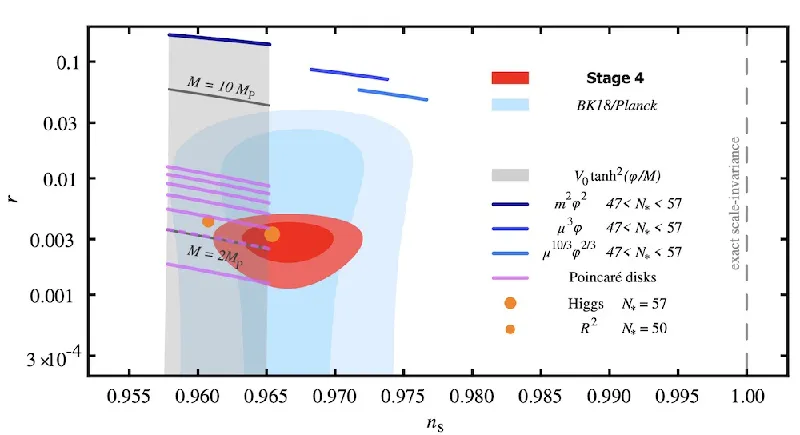Shifting the Cosmic Paradigm: Unpacking the BAO-CMB Tension and Its Impact on Inflationary Models

In a groundbreaking study published by a team of renowned researchers, the intricate relationship between cosmic microwave background (CMB) data and baryon acoustic oscillation (BAO) measurements has been dissected to uncover what they call the 'BAO-CMB tension.' This tension has significant implications for our understanding of cosmic inflation—the rapid expansion of the universe in its earliest moments.
The Cosmic Inflation Debate
Cosmic inflation serves as a leading theory to explain the uniformity and structure we observe in the universe today. It suggests that the universe underwent a brief but exponential expansion shortly after the Big Bang. The scalar spectral index (ns) is a crucial parameter within this framework as it helps distinguish between various inflationary models. According to the research, the constraining power of ns is notably influenced when CMB data is combined with BAO data.
What is the BAO-CMB Tension?
The BAO-CMB tension refers to the discrepancy observed when comparing parameter estimates from CMB data (which provides snapshots of the early universe) against those from BAO measurements (which track the clustering of galaxies). The researchers found that the combined analysis significantly shifts the value of ns to higher levels, which in turn disfavours many previously accepted inflationary models. For instance, models like Starobinsky and Higgs inflation, once favored, are now apparently out of alignment, with the tension reaching significances of more than 2σ (sigma).
Understanding the Shift in ns
This upward shift in ns observed when including BAO data reflects a deep degeneracy between the scalar spectral index and specific BAO parameters. In plain terms, the researchers argue that until we resolve the BAO-CMB tension, any interpretation of the combined data concerning inflationary models must be approached with caution. They emphasize that the parameters derived from BAO have been influencing the constraints on ns without providing direct limits on it.
Implications for Future Research
Looking forward, the resolution of this tension could open new avenues in theoretical physics and cosmology. If the tension is resolved positively, it may support current inflationary models. Conversely, if the tensions persist, it could signal the need to revise our understanding of cosmological physics or even explore new physical theories beyond the standard cosmological model (ΛCDM).
In conclusion, this study underlines the necessity of further investigations into both CMB and BAO measurements as scientists seek to refine their understanding of the universe's early moments. The quest to reconcile these measurements will not only impact theoretical physics but will also illuminate fundamental questions about the nature of our universe.